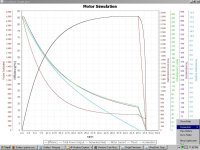lesdit
100 W
I've been reading the threads, and have seen some videos of some rc powered bikes, mostly bmx, doing little
bursts of acceleration. It just occurred to me that this is what drag racing is like.
Funny car motors make >4000 HP for a few seconds. They have no radiator.
Now, are RC motors in this dragster category?
My new build is a DH bike setup for trail riding. Uphill. 500 ft elevation gain in one pull.
Are RC motors thermally capable of a herky jerky single track hill climb ?
Right now I'm going with the Cyclone geared motor, but I'm open to all options.
bursts of acceleration. It just occurred to me that this is what drag racing is like.
Funny car motors make >4000 HP for a few seconds. They have no radiator.
Now, are RC motors in this dragster category?
My new build is a DH bike setup for trail riding. Uphill. 500 ft elevation gain in one pull.
Are RC motors thermally capable of a herky jerky single track hill climb ?
Right now I'm going with the Cyclone geared motor, but I'm open to all options.



